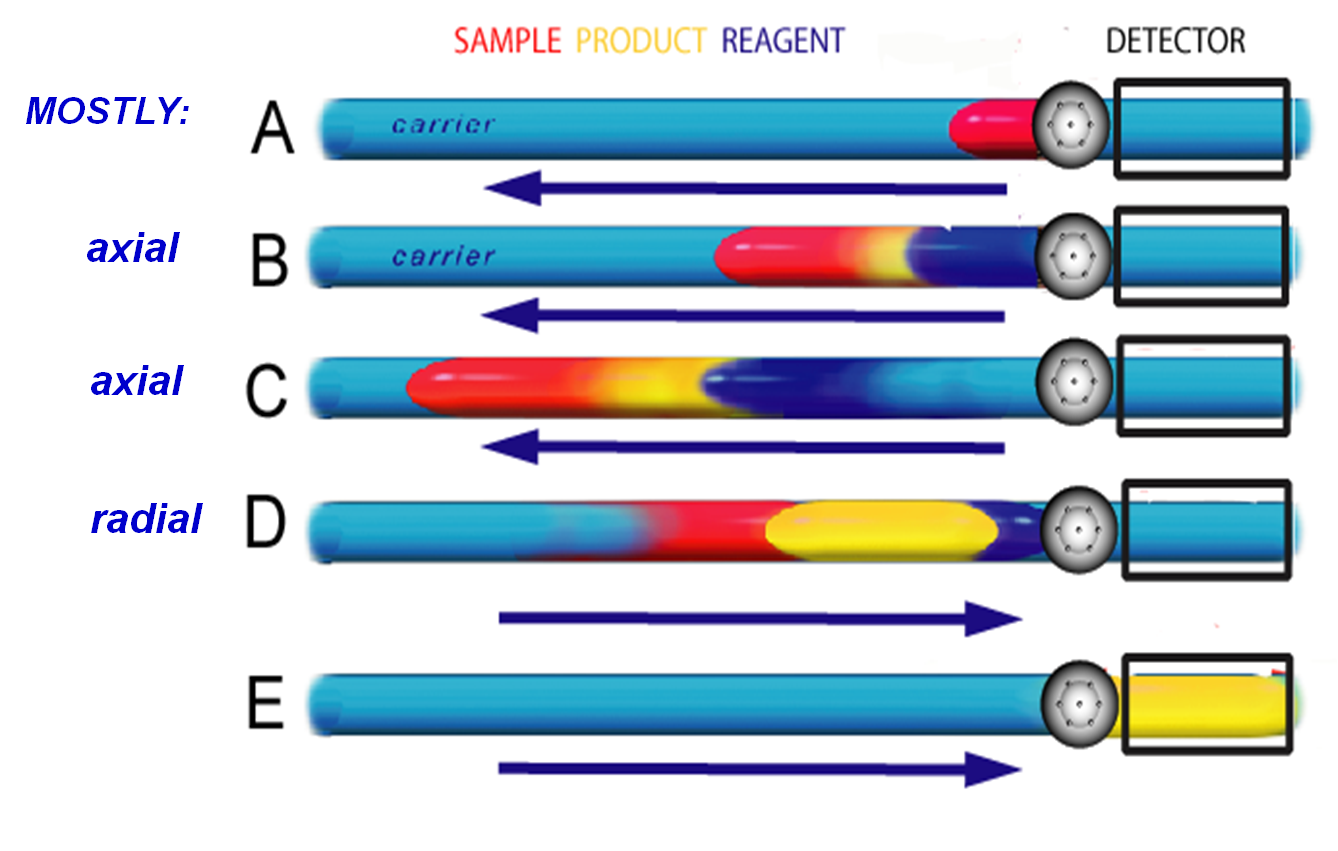There are two mass transfer processes that provide mixing of sample with reagent: the axial dispersion and the radial dispersion. By injecting sample first (A) and reagent second (B), the reagent penetrates the sample zone due to axial dispersion as the combined zones move further upstream (C). Upon flow reversal (D) turbulent flow, caused by acceleration promotes radial and axial dispersion as the reaction mixture passes trough the tortuous path of the flow channel on the way to the flow cell. When the reaction mixture reaches a flow cell (E) the radial mixing is complete. Dispersion and ensuing chemical reactions are visualized in the following sections.
Mixing by Dispersion
2.2.3.










